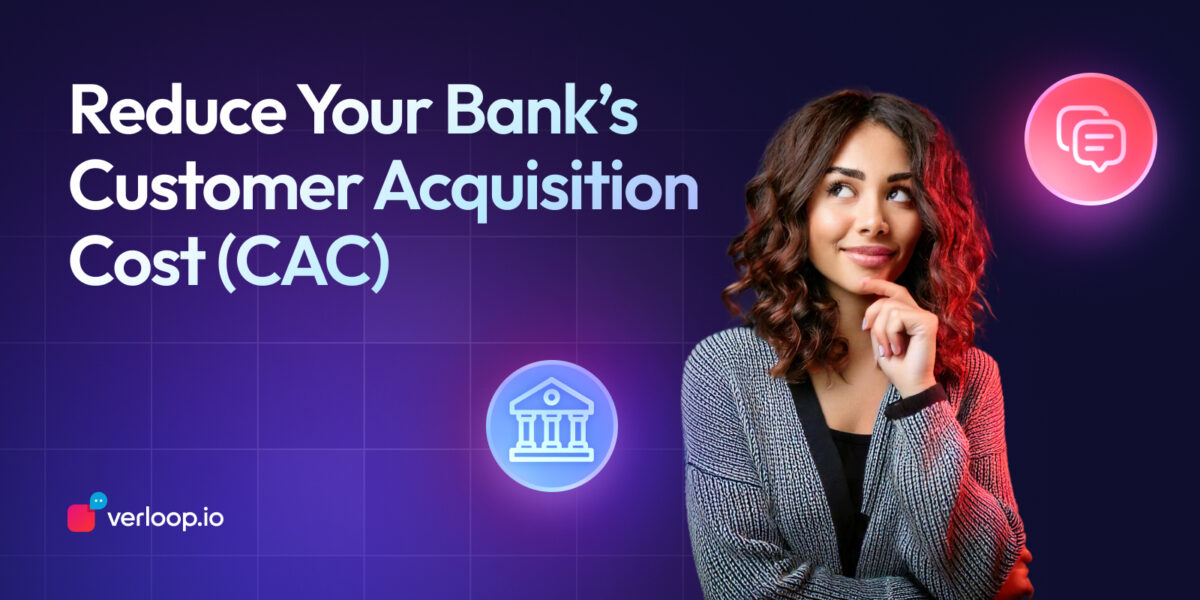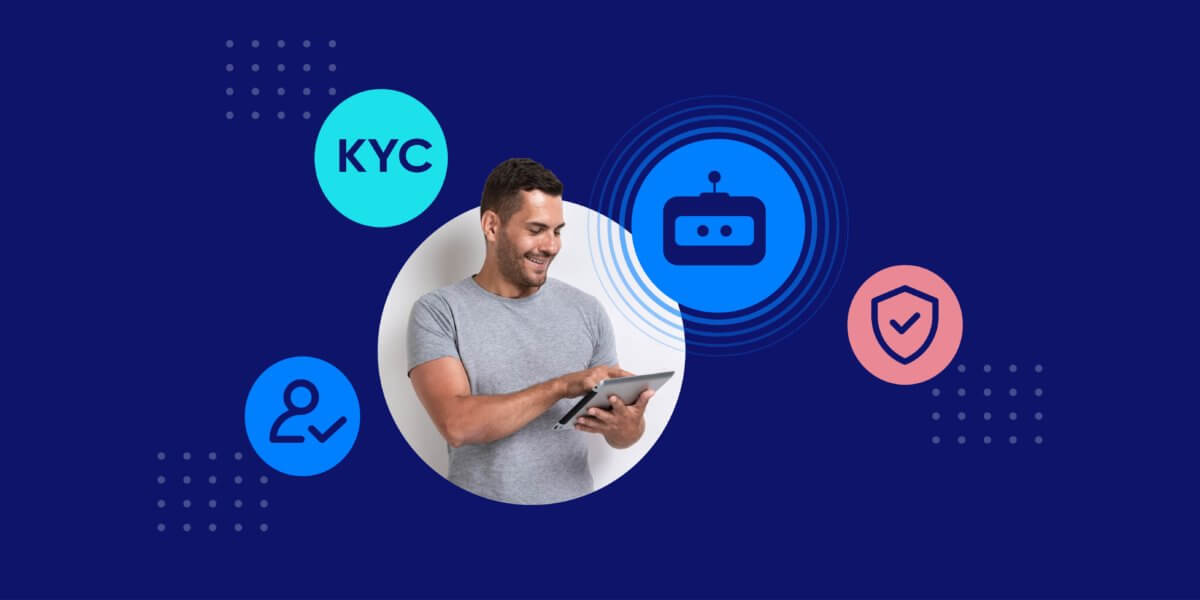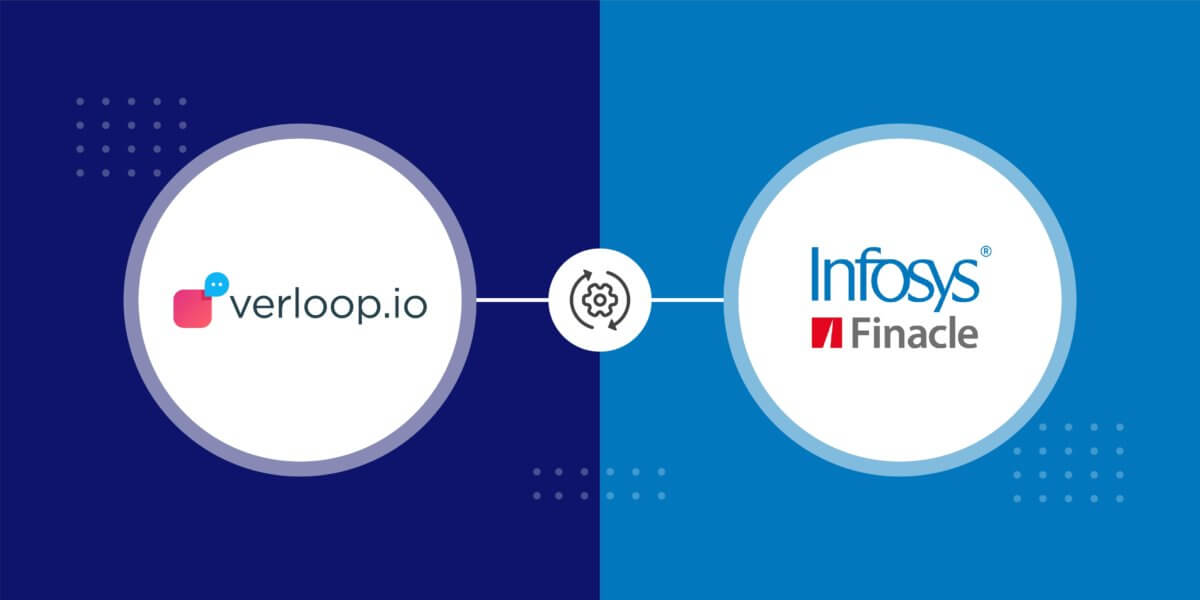10 Ways to Reduce Your Bank’s Customer Acquisition Cost (CAC)
- June 26th, 2025 / 5 Mins read
-
Aarti Nair

10 Ways to Reduce Your Bank’s Customer Acquisition Cost (CAC)
- June 26th, 2025 / 5 Mins read
-
Aarti Nair
Have you ever watched your marketing budget climb higher and higher as you chase new accounts, only to discover each customer is costing you more than they’re worth?
The average customer acquisition cost (CAC) can easily reach ₹15,000–20,000 per new account. That’s money you could reinvest in better rates, digital upgrades or branch expansion.
“The best way to reach customers is to know and understand them,” Jeff Bezos once said.
But how do you turn deep customer insight into genuine savings on CAC?
Could smarter data analytics, personalised digital journeys or strategic partnerships shave lakhs off your annual spend?
In this blog, we’ll explore ten practical strategies, anchored in real-world examples and industry benchmarks, to help your bank win new clients more cost-effectively while strengthening customer loyalty. Ready to cut CAC and grow more sustainably? Let’s get started.
What is Customer Acquisition Cost in Banking?
CAC, short for Customer Acquisition Cost, represents the money a business invests to gain a new customer. For banks and credit unions, this means getting new clients interested in their services by showcasing their advantages over other financial institutions. However, financial service providers must balance competitive products with an easy customer experience. CAC includes the resources and time spent on getting new customers, like marketing campaigns, customer interactions, and promotions.
Customer Acquisition Cost (CAC) measures how much you spend—across marketing, sales incentives and promotional events—to win a single new account. In formula form:
CAC = Total Acquisition Spend ÷ Number of New Customers
Let’s say your bank launches a ₹30 lakh campaign combining digital ads, referral bonuses and branch roadshows. Over three months, that effort brings in 200 new customers.
-
Campaign spend:
-
Digital ads: ₹12 lakh
-
Referral bonuses: ₹8 lakh
-
Roadshow events: ₹10 lakh
-
Total: ₹30 lakh
-
-
New customers acquired: 200
That means your CAC is:
₹30 lakh ÷ 200 = ₹15,000 per customer
Is ₹15,000 acceptable for your bank’s lifetime value projections? Or could reallocating funds—perhaps moving ₹5 lakh from broad social-media ads into targeted lead-nurture emails—lower your CAC to ₹12,000? By breaking down CAC this way, you spot exactly which channels deliver the best return and where you might trim costs without losing growth.
Examples of Customer Acquisition Costs in Banking
Banks and credit unions use a variety of channels to showcase their products—zero-fee accounts, high-interest savings, digital apps—and each comes with its own price tag. Here’s a look at the main cost drivers:
1. Digital Advertising
From Google search ads to sponsored posts on LinkedIn and Instagram, digital campaigns pay per click or per thousand impressions. A ₹2 lakh ad spend that generates 10,000 clicks and 200 funded accounts works out to roughly ₹ 1,000 per new customer.
2. In-Branch Displays
Posters, brochures and screen ads in your branches raise awareness of new offers. Design and printing might cost ₹50–₹200 per brochure, plus screen installation fees. If a ₹ 50,000 investment yields 50 sign-ups, you’re spending ₹ 1,000 per customer.
3. Point-of-Purchase Partnerships
Co-branded promotions like “Use our credit card at Partner X for 5% cashback” mean you underwrite the discount. On a ₹5 lakh purchase volume and 20 new cardholders, that cashback comes to ₹ 1,250 per acquisition.
4. Social Media Campaigns
Organic posts complement paid campaigns on Facebook or Twitter. Creative production can run ₹ 50,000–₹1 lakh, plus a ₹1 lakh ad budget. If 500 app downloads turn into 100 live accounts, that’s ₹ 1,500 per customer.
5. Direct Mail & Email Outreach
Sending 10,000 printed mailers at ₹40 each costs ₹4 lakh; a response of 200 new accounts works out to ₹ 2,000 per acquisition. Emails can be cheaper, often under ₹2 per send, but watch your open and conversion rates.
6. Website & Digital Onboarding
Investing ₹5–10 lakh in seamless KYC flows, chatbots and e-signatures pays off in faster, online sign-ups. If those features bring in 500 new customers over three months, your incremental cost is around ₹ 1,500 per customer.
10 Strategies for Lowering Customer Acquisition Costs in Banking
Even the savviest banks can find their marketing budgets ballooning—yet every rupee saved on acquiring a customer boosts your ROI. Here are ten proven tactics to trim your CAC without sacrificing growth or customer experience.
1. Leverage Referral Programmes
Why chase cold leads when your happiest customers can do the selling for you? Offer existing customers a small incentive—say, a ₹500 voucher—for referring friends who open an account. These warm leads typically convert at twice the rate of paid ads, driving CAC down by up to 30%.
2. Optimise Your Digital Onboarding
Complex KYC and form-filling often lead to drop-offs. Streamline your online journey with auto-fill, mobile document upload and real-time chat support. A smoother flow can boost completion rates by 20%, effectively cutting your CAC in proportion.
3. Target Lookalike Audiences
Use your CRM data to build lookalike segments on Facebook or Google Ads. By focusing on users who mirror your best customers, you lower cost-per-acquisition from ₹1,000 to around ₹700, according to industry benchmarks.
4. Partner with Fintechs and Marketplaces
Plug into established platforms—loan aggregators, investment apps or e-commerce checkout offers—to tap engaged audiences. Revenue-share or co-branded offers can acquire new accounts at a fraction of the cost of standalone campaigns.
5. Deploy Chatbots for Pre-Qualification
Add a chatbot to your website to field FAQs and pre-qualify visitors automatically. With the bot handling 60% of basic queries, your human advisors spend more time on high-value prospects, reducing acquisition effort by nearly 25%.
6. Personalise Email Nurture Sequences
Segment leads by source and behaviour, then send tailored email journeys—welcome series, feature highlights, limited-time offers. Personalised emails deliver 6× higher transaction rates, making each campaign more cost-efficient.
7. Create High-Value Educational Content
Host free webinars on topics like “Maximising Your Savings” or “Credit-Score Hacks.” Attract quality leads who register with their email and phone, lowering your paid-ad reliance and reducing CAC by up to ₹300 per lead.
8. Retarget Abandoned Applications
Customers who start an online application but don’t finish are prime prospects. Serve them gentle reminders via display ads or email—these “warm” retargeting campaigns often convert at half the cost of cold acquisition.
9. Optimise Branch Footfall with Geo-Fencing
Use geo-fencing to send push notifications to potential customers near your branches—“Open a no-fee account today and get ₹200 cash back.” These hyper-local prompts can cut in-branch acquisition costs by 20%.
10. Analyse and Reallocate in Real Time
Set up dashboards to track CAC by channel hourly or daily. If you see your Google Ads CAC rising above ₹1,500, shift the campaign budget to lower-cost tactics instantly. Real-time data lets you squeeze every rupee’s worth from your spend.
Reducing CAC isn’t about slashing budgets—it’s about smarter allocation and an ever-improving customer journey. By combining referrals, personalised digital experiences and data-driven optimisation, your bank can acquire new customers at a fraction of today’s ₹15,000–20,000 average cost. Start with one or two strategies, measure the impact, and scale what works—your bottom line will thank you.
Suggested Reading: 10 Conversational AI Use Cases in Banking to Streamline Operations
Elevating Customer Experience to Reduce Customer Acquisition Costs in Banking
Customers remember how you make them feel. By minimising friction, personalising experiences, and offering continual presence, banks can create favourable impressions and cultivate enduring relationships whilst also lowering their costs.
Happy customers are loyal customers as they advocate for your business through word-of-mouth. In order to get more happy customers and elevate your customer experiences, choose Verloop.io’s AI powered automation solutions for your business.
Our support solutions will not only help you reduce the CAC involved but also increase the customer’s lifetime value. (CLV)
Schedule a demo with us today and get started!
FAQs
1. How quickly will referral programmes reduce my CAC?
Referral incentives typically yield a 20–30% boost in conversion rates. You can see measurable CAC reductions within one to two referral cycles (about 1–2 months) once your offer gains traction.
2. What’s the ideal incentive for a banking referral scheme?
Balance value with cost: ₹300–₹500 in cashback or reward points is enough to motivate referrals without eroding profits, especially if your average lifetime value per customer exceeds ₹10,000.
3. Which digital onboarding improvements have the biggest ROI?
Features like mobile document upload, auto-fill from Aadhaar or PAN, and real-time chat support each improve completion rates by 10–15%. Implementing all three can boost end-to-end sign-ups by up to 30%.
4. How do I measure lookalike-audience performance?
Compare cost-per-acquisition (CPA) and conversion rates between lookalike segments and your existing “cold” audiences. A successful lookalike campaign will typically deliver 20–30% lower CPA.
5. Are chatbots really effective for pre-qualification?
Yes. Banks using AI chatbots report handling 50–70% of inbound queries without human intervention, which frees sales teams to focus on high-intent leads and can lower overall acquisition effort by 20–25%.
6. What dashboard metrics should we track in real time?
Monitor channel-level CAC, click-through rates (CTR), form-completion rates, and conversion-to-account ratios daily. Alert thresholds—like CAC rising 20% above target—let you redeploy budget immediately.







